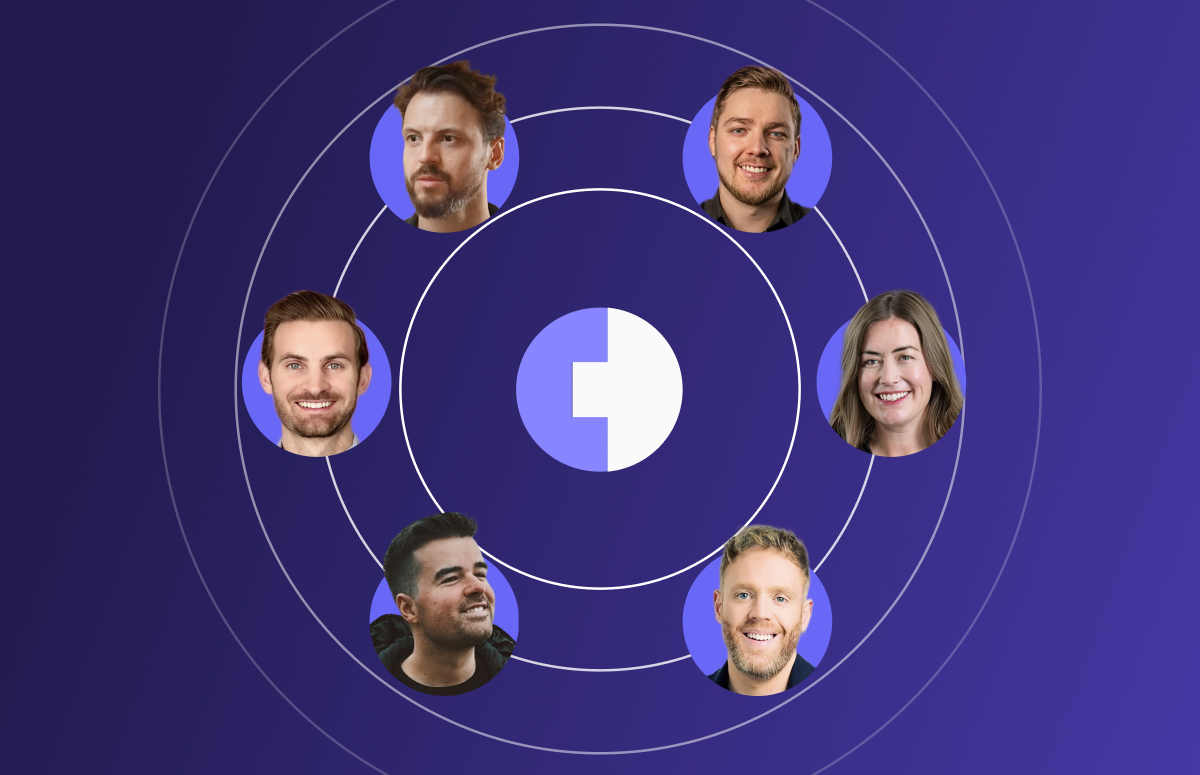Zero Click SEO: What It Is and Why It Matters in 2026
The search landscape is changing faster than at any other point in the last 25 years.
As Tom Mansell, VP of Organic Performance at Crowd, puts it:
“Search marketing has changed more over the last two years than it has done arguably in the last twenty-five.”
And the biggest driver? AI-powered search experiences. Tools like ChatGPT, Perplexity, and Google’s AI Overviews are no longer experiments - they’re mainstream.
But with them comes a fundamental shift in the value exchange between brands and search platforms.
Traditionally, search engines crawled your content, served it to users, and rewarded you with traffic in return. Now, they’re scraping and aggregating that same content to deliver answers directly in the results - no click required.
Welcome to the zero-click world.
The zero click SEO problem: More visibility, less traffic
In the zero-click world, your brand might be more visible than ever - but that doesn’t necessarily mean more visitors to your site.
Tom calls it “the great separation between impressions and clicks.”
“Click-through rates are in decline by upwards of 60–70% year-on-year. Brands are getting loads more visibility as measured by impressions. But because those click-through rates are so low, the traffic isn’t necessarily coming through.”
The data paints a strange picture:
- Visibility is up - brands are showing up in more searches and gaining more impressions.
- Search demand is up - Google reported a 21% increase in searches in 2024.
- Yet traffic is flat or down - many publishers and brands saw no corresponding growth in visitors.
The reason? Users are increasingly staying inside the platform.
Google’s AI Overviews now surface answers directly in the results, meaning the user doesn’t need to click through to your site. The information they want is right there.
This isn’t just a Google issue. In AI-led environments, Large Language Models (LLMs) like ChatGPT and Perplexity do the same thing. They pull content from across the web, aggregate it, and serve it in a single, clean response, keeping the user in their ecosystem rather than sending them to yours.
This shift breaks the long-standing value exchange between brands and search engines:
- You create high-quality content.
- Search engines index it and rank it.
- You get traffic in return.
Now, step 3 is disappearing - but steps 1 and 2 are more important than ever.
For marketers, this creates a new dilemma: How do you prove the value of your search efforts when your traditional KPI - traffic - is in freefall?
The answer lies in rethinking both what you measure and how you create content - something we’ll explore in the next section.
Rethinking measurement in the zero-click SEO era
The answer isn’t to abandon Google or SEO altogether.
While ChatGPT handles approximately 2.5 billion prompts per day (as of mid-2025), Google is still clocking in well above that, processing between 13.7 and 14 billion searches daily.
Tom reiterates:
“Google is still a lot bigger than ChatGPT in terms of daily searches. The demand and usage are still there - it’s just that people are staying within the ecosystem.”
Instead, the challenge is reframing success. Tom recommends moving away from a traffic-first mindset to one based on visibility → conversions.
Key metrics to prioritise:
- Visibility - Measured through impressions and presence in AI/LLM-generated answers.
- Brand demand - Track rises in branded search and direct traffic as indicators of increased awareness.
- Conversion rate - Focus on whether the traffic you do get is more qualified.
In fact, Tom’s team is already seeing a silver lining:
“The traffic we do get is more qualified. Conversion rates are actually increasing, which is good. If visibility and conversions are going up, the middle metric - traffic - matters less.”
Winning content in a zero-click SEO world
Content is no longer just for your website visitors - it’s the fuel that powers AI models, search summaries, and conversational answers.
But here’s the catch: not all content gets treated equally.
In an environment where visibility often happens without a click, the winning formula blends experience, expertise, authority, and freshness, with distribution to match.
1. Experience: Proof you’ve been there
Generic guides aren’t enough anymore.
AI marketing tools and search engines increasingly prioritise content that demonstrates lived experience, such as customer testimonials with tangible outcomes.
Here’s how to show this experience:
- Include product reviews based on real usage.
- Share behind-the-scenes detail to prove you’ve done the work, not just read about it.
2. Expertise: Real names, real credentials
Attributing content to “the marketing team” won’t cut it. Models and algorithms reward clear, attributable authorship.
- Use named authors with relevant roles, experience, or qualifications.
- Maintain detailed author bios that establish credibility in the subject matter.
- Consider co-creating with recognised industry experts to add weight and reach.
3. Authority: Recognition beyond your own site
It’s not enough to say you’re a trusted voice - you need to be seen and cited in the right places.
- Earn backlinks and mentions from reputable, industry-specific sources.
- Contribute guest articles to well-regarded publications.
- Participate in industry panels, podcasts, and webinars that can be referenced online.
4. Freshness: Content with a pulse
Stale content not only hurts rankings; it’s less likely to be surfaced by AI systems.
- Review all key assets at least every 12 months.
- If still correct, date-stamp updates for transparency.
- Add new data points, case studies, or insights to boost relevance.
5. Format diversity: Don’t just stick to text
AI is now ingesting and referencing video, audio, and visual content alongside articles. That means your strategy should span formats.
- Record short, high-value video explainers.
- Publish podcast interviews with B2B influencers.
- Turn data into infographics or interactive visuals that AI can parse and reference.
6. Distribution: Be everywhere your buyers are
If your content lives only on your website, you’re missing opportunities for visibility.
- Recut and repackage assets for LinkedIn, YouTube, TikTok, industry newsletters, and partner channels.
- Syndicate to trusted third-party sites for added reach and credibility.
- Encourage internal SMEs and external influencers to share, cite, and discuss your content.
Beyond SEO: The return of PR and community
In a zero-click world, you need to be present in the places where buyers (and AI models) turn to for credible information. That’s why PR and community-led strategies are seeing a comeback.
Search engines and LLMs don’t just crawl websites; they’re trained on trusted, authoritative sources. If your brand is cited in those sources, you’re more likely to be surfaced in AI-generated answers, whether or not someone clicks through to your site.
Tom points out:
“PR is having a massive resurgence. Understand the sources LLMs use to train themselves, and get cited in them. Industry press, niche communities, Reddit - they all matter.”
This is a fundamental shift. In the old SEO playbook, you’d chase backlinks primarily for ranking power.
Now, citations in reputable, high-signal environments (think industry publications, thought leadership features, and respected niche blogs) are just as valuable for fuelling AI-driven visibility.
The role of communities
Communities like Reddit, Quora, and specialist forums are not only high-traffic destinations in their own right, but also goldmines for authentic, experience-based content. These platforms reward depth, originality, and a genuine point of view.
When a user shares a first-hand story or a practical solution in these spaces, it carries more weight than a polished corporate statement.
AI models then amplify that signal, pulling those insights into aggregated answers that can reach millions.
What this means for brands
To make PR and community a meaningful part of your zero-click strategy, you need:
- Dedicated community managers who understand the tone, etiquette, and value systems of each space.
- Credible spokespeople (internal SMEs, executives, or partners) who can engage with real expertise, not just promotional messaging.
- Consistent participation in discussions, AMAs, and content contributions that provide tangible value.
This isn’t about posting branded press releases everywhere. It’s about embedding your expertise into the conversations your audience already trusts - so that when AI summarises the topic, your perspective is part of the answer.
Overcoming roadblocks
Making the leap from traffic-first to visibility-first measurement can feel like pulling the rug out from under long-established marketing playbooks.
It challenges the way teams have reported, budgeted, and proven value for years.
You may encounter the following:
Internal resistance
Inside the business, the first barrier is often cultural.
Leadership and stakeholders have grown comfortable with familiar KPIs like sessions, CTR, and bounce rate - metrics that have been the bedrock of SEO reporting for over a decade.
When you suggest that traffic may no longer be the primary indicator of success, it can spark pushback:
- “If clicks are falling, how do we prove SEO is worth the investment?”
- “How do we know all these impressions are actually moving the needle?”
Overcoming this means proactive education. Show decision-makers the reality of zero-click behaviour with real examples from your own search performance.
Highlight the shift in user journeys - where awareness, trust, and preference may be built long before a visit to your site.
As Tom advises:
“Educate leadership on the inevitability of this shift.”
Frame it not as a loss, but as an evolution - a chance to measure the true breadth of your influence across the modern search ecosystem, including AI-led platforms.
External tracking challenges
Even if you get internal buy-in, measurement technology is still catching up.
Google Search Console and analytics tools don’t yet give a full picture of brand exposure in AI-led environments, and many interactions happen in closed ecosystems where referral data is absent.
Emerging third-party tools might be able to fill the gap by tracking where and how brands are mentioned in AI-generated answers.
But, as Tom notes, these solutions are still in their infancy - useful for directional insight, but not yet comprehensive enough for full attribution models.
That means marketers need to:
- Pilot new reporting frameworks that combine share-of-voice, branded search volume, and downstream conversion data to connect visibility with pipeline and revenue.
- Layer in qualitative indicators, such as tracking inbound mentions, partner collaborations, and community discussions that arise following high-visibility placements.
So what does good look like in a zero-click SEO world?
To recap, in this new search landscape, the definition of “winning” looks different from the traditional SEO playbook.
Traffic is no longer the sole measure of success. What matters is whether your brand is showing up where it counts, earning trust, and driving action even without the click.
Tom’s vision of success is simple in theory but demanding in execution:
Visibility and conversions are trending up - even if traffic is down
If your footprint in high-intent spaces is growing, and that visibility is translating into pipeline and revenue, you’re moving in the right direction.
A strong, multi-format content presence across web, video, and social
Text alone won’t cut it.
Winning brands publish in multiple formats so they can appear in featured snippets, YouTube results, short-form video carousels, and social feeds.
Regularly refreshed, expert-authored, and widely cited content
Outdated, anonymous posts won’t gain traction in an AI-powered ecosystem.
Search engines and LLMs prioritise fresh, original perspectives from credible authors.
A footprint in PR, industry press, and online communities
Being mentioned and cited in reputable sources fuels both human trust and AI visibility.
A steady presence in the right publications, podcasts, and niche forums compounds authority over time.
Or as Tom puts it:
“Visibility is key. To win in these areas, you need more content in more places. Search behaviour isn’t going anywhere - but the platform mix is becoming way more diverse beyond Google.”
The takeaway:
In a zero-click world, you’re not just optimising for search engines - you’re optimising for everywhere your buyers are looking for answers.

/SMB%20ABM/Blog_Image_How%20SMBs%20Can%20Run%20Enterprise-Level%20ABM%20on%20a%20Lean%20Budget%20%20Resource%20Card.webp)

